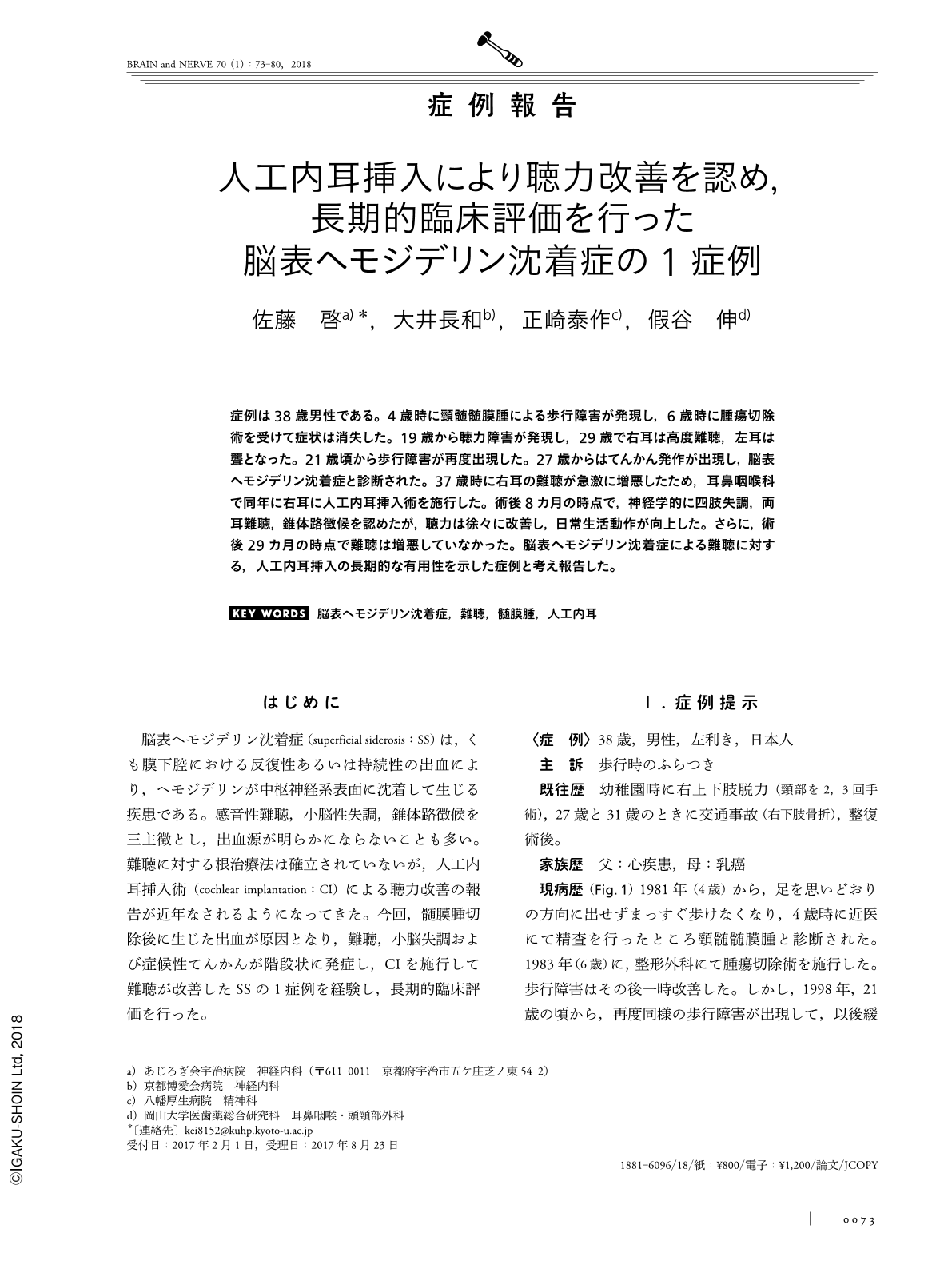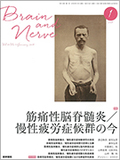Japanese
English
- 有料閲覧
- Abstract 文献概要
- 1ページ目 Look Inside
- 参考文献 Reference
症例は38歳男性である。4歳時に頸髄髄膜腫による歩行障害が発現し,6歳時に腫瘍切除術を受けて症状は消失した。19歳から聴力障害が発現し,29歳で右耳は高度難聴,左耳は聾となった。21歳頃から歩行障害が再度出現した。27歳からはてんかん発作が出現し,脳表ヘモジデリン沈着症と診断された。37歳時に右耳の難聴が急激に増悪したため,耳鼻咽喉科で同年に右耳に人工内耳挿入術を施行した。術後8カ月の時点で,神経学的に四肢失調,両耳難聴,錐体路徴候を認めたが,聴力は徐々に改善し,日常生活動作が向上した。さらに,術後29カ月の時点で難聴は増悪していなかった。脳表ヘモジデリン沈着症による難聴に対する,人工内耳挿入の長期的な有用性を示した症例と考え報告した。
Abstract
We report the case of a 38-year-old man with gait disorder and hearing loss. The patient had developed gait disorder due to a cervical meningioma since 4 year-old disappeared for 15 years after the surgical removal of the meningioma. However, at the age of 21 year-old, the gait disorder reappeared and worsened progressively. Sensorineural hearing loss (SNHL) and epileptic seizures developed during the disease course, and he was diagnosed with superficial siderosis (SS). When he was 37 years old, he experienced sudden-onset of right-side hearing impairment and was considered a candidate for cochlear implantation (CI) at the otorhinolaryngology clinic of the nearby University Hospital. He underwent CI in November 2014. Eight months after the operation, his right side hearing improved although ataxia, hearing loss, and pyramidal sign persisted. At the long term follow-up of 29 months after CI, his hearing remained at the improved level. Thus, CI may be an effective long-term treatment for SNHL in patients with SS and could prevent the progression of his hearing loss.
(Received February 1, 2017; Accepted August 23, 2017; Published January 1, 2018)

Copyright © 2018, Igaku-Shoin Ltd. All rights reserved.


